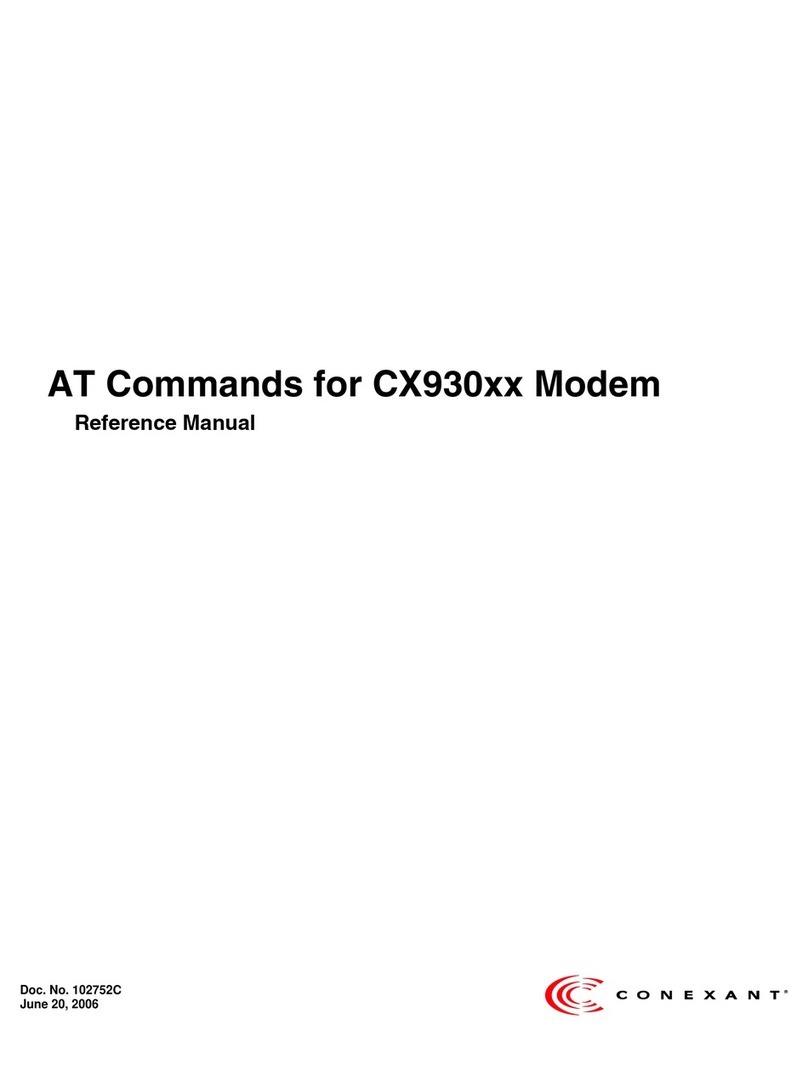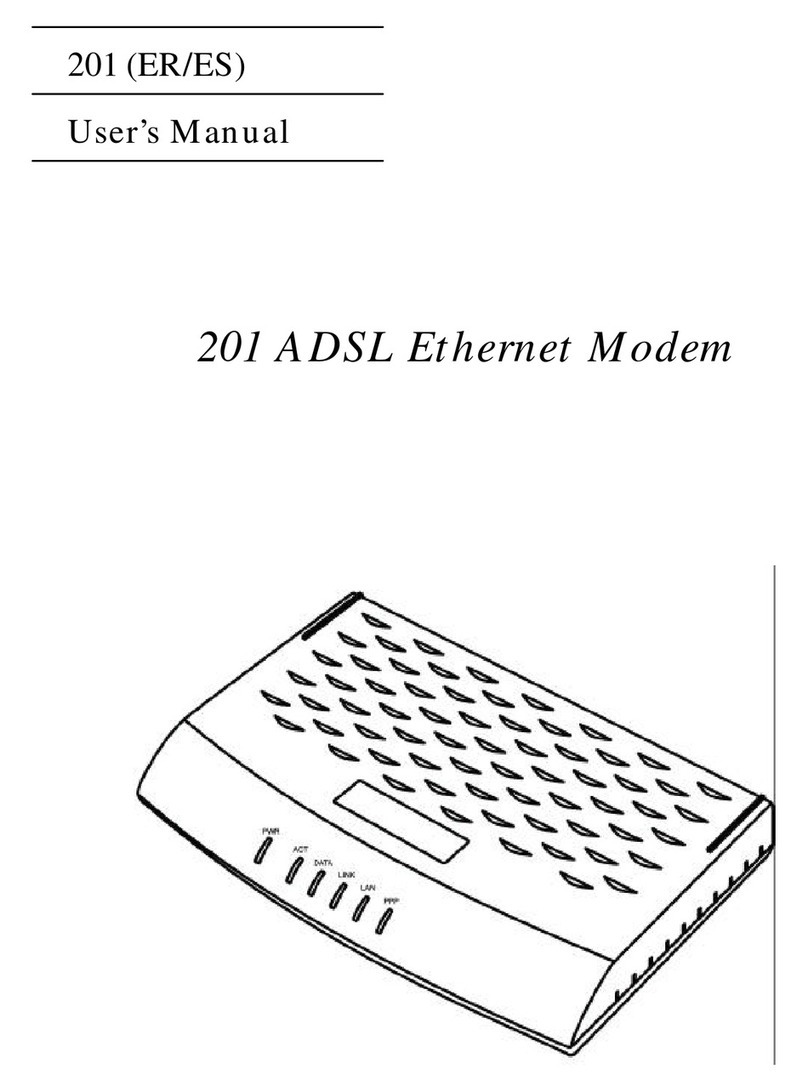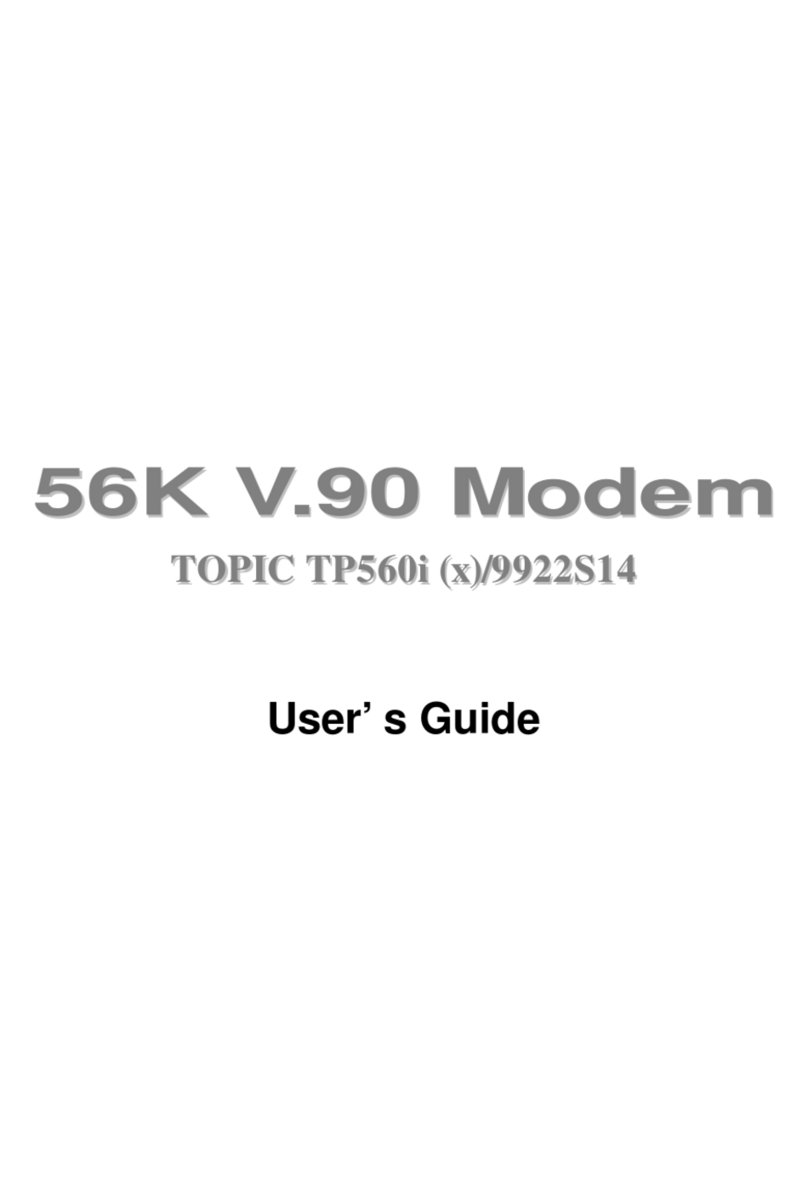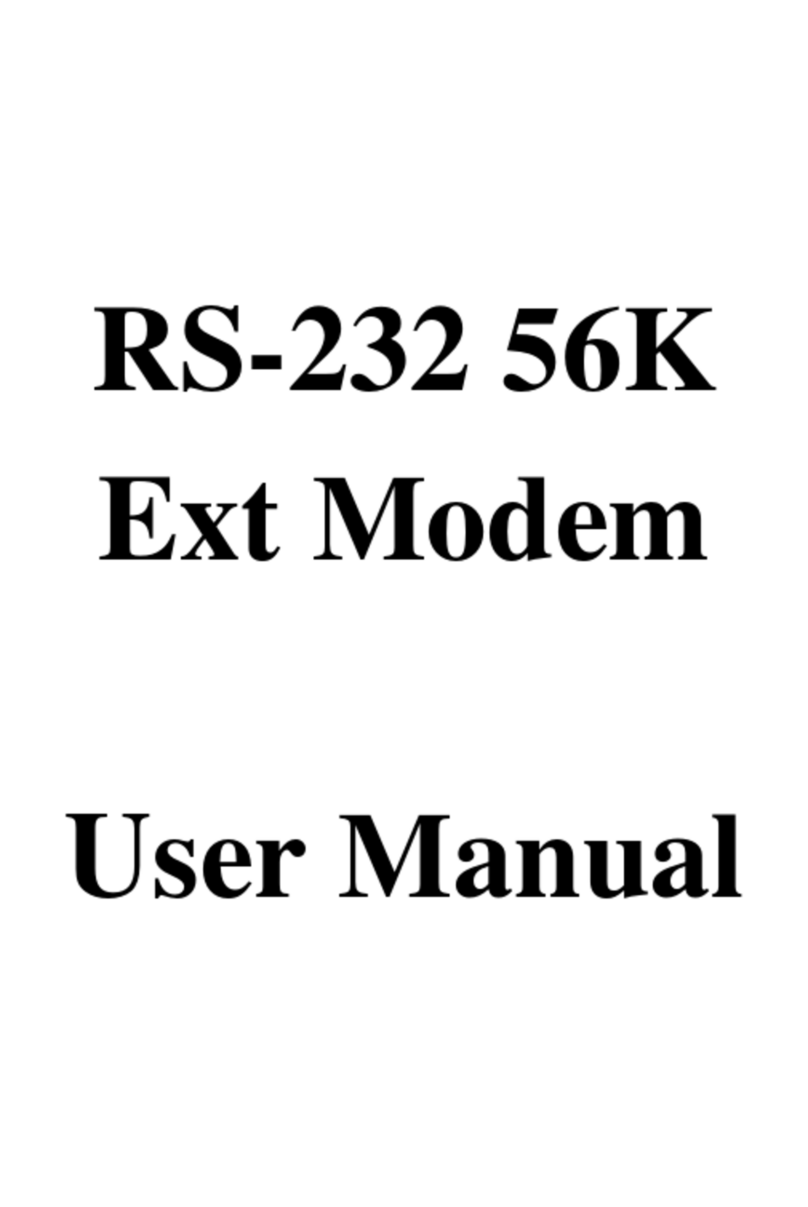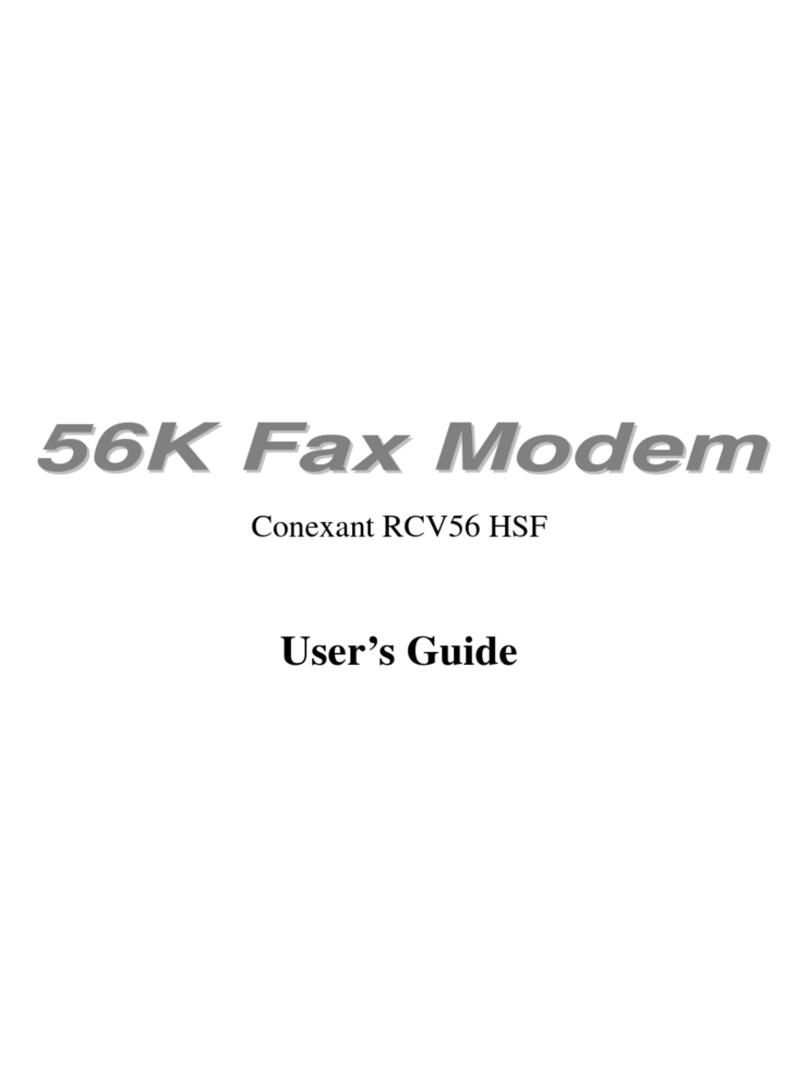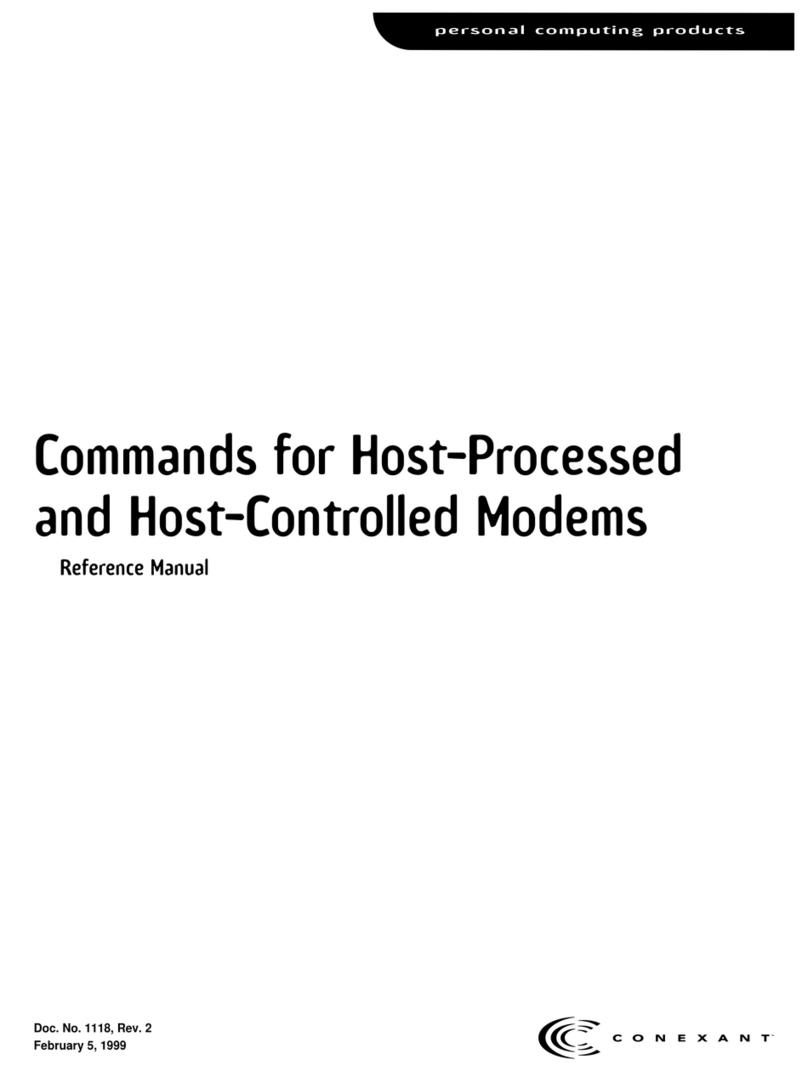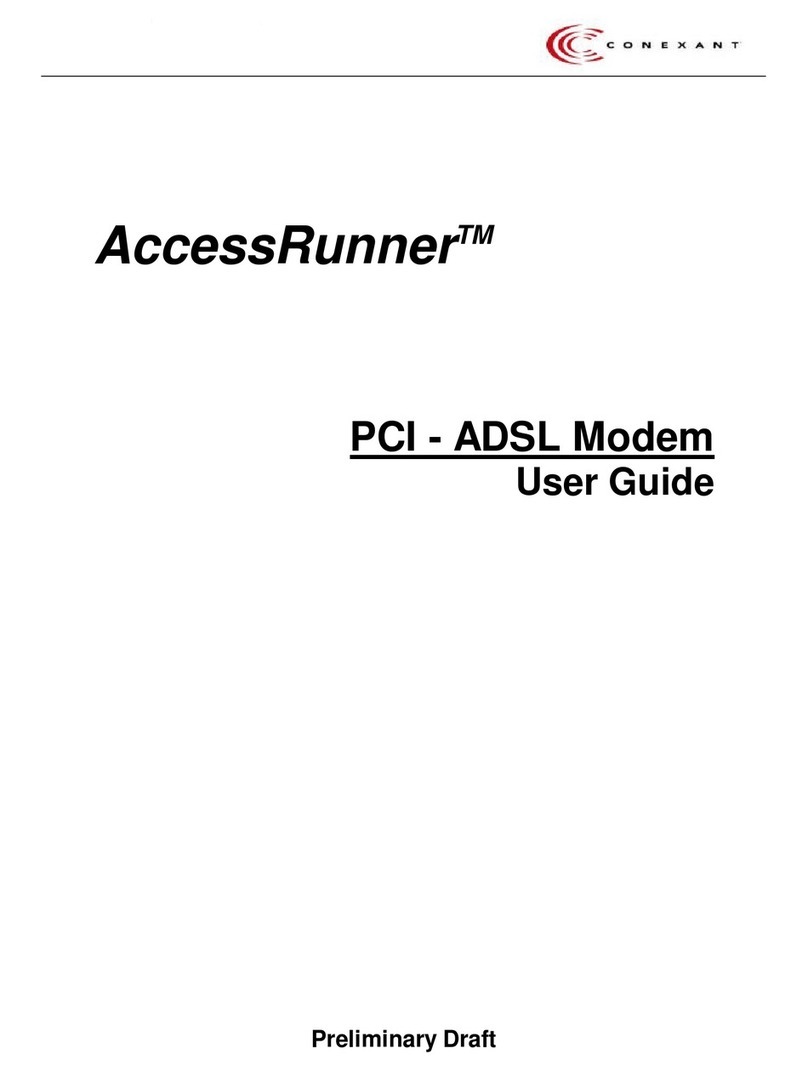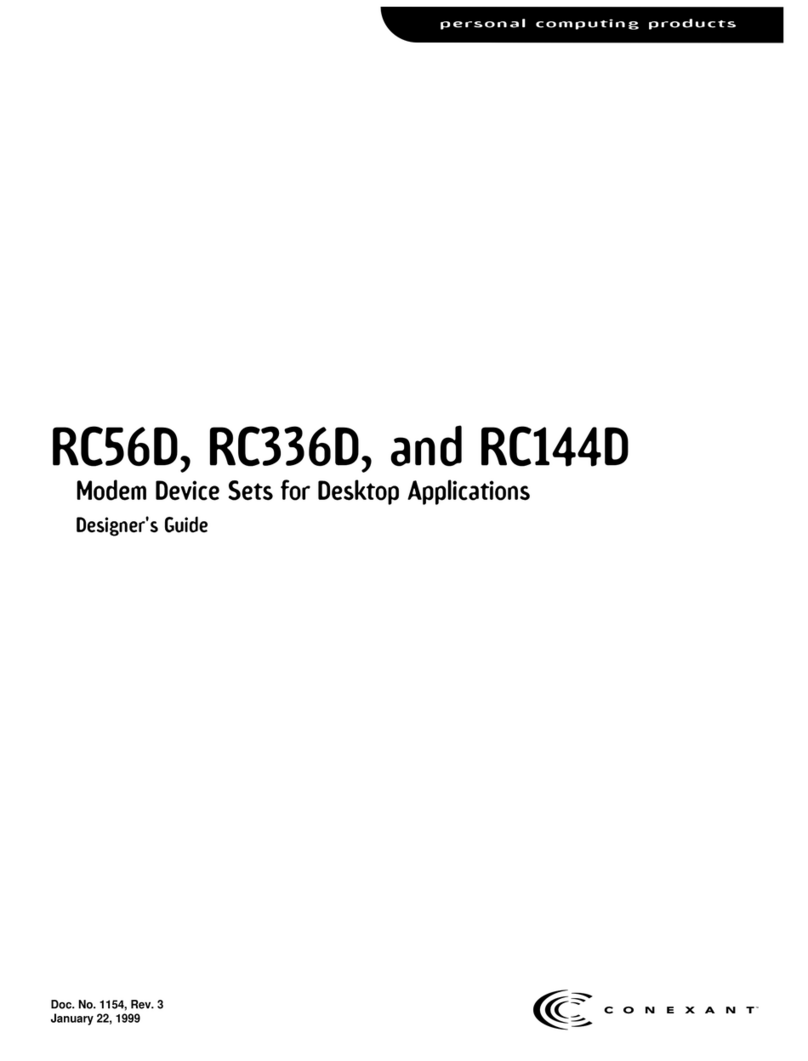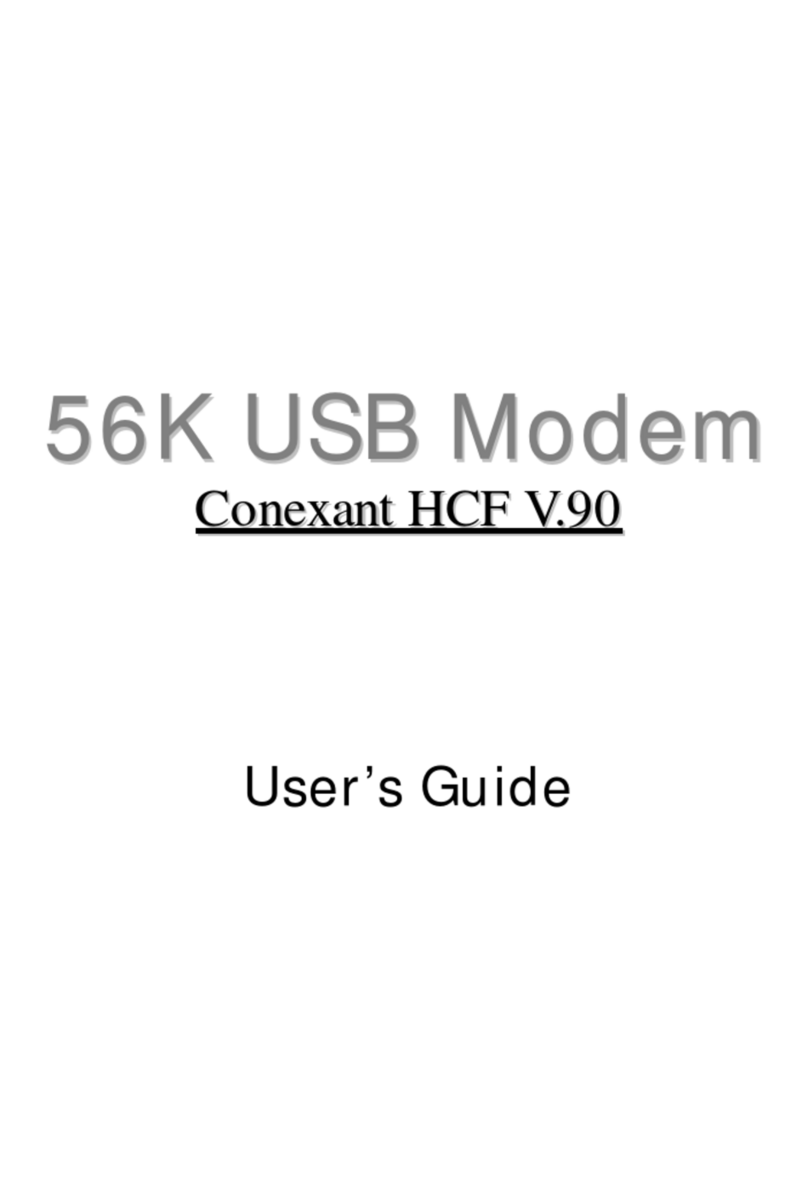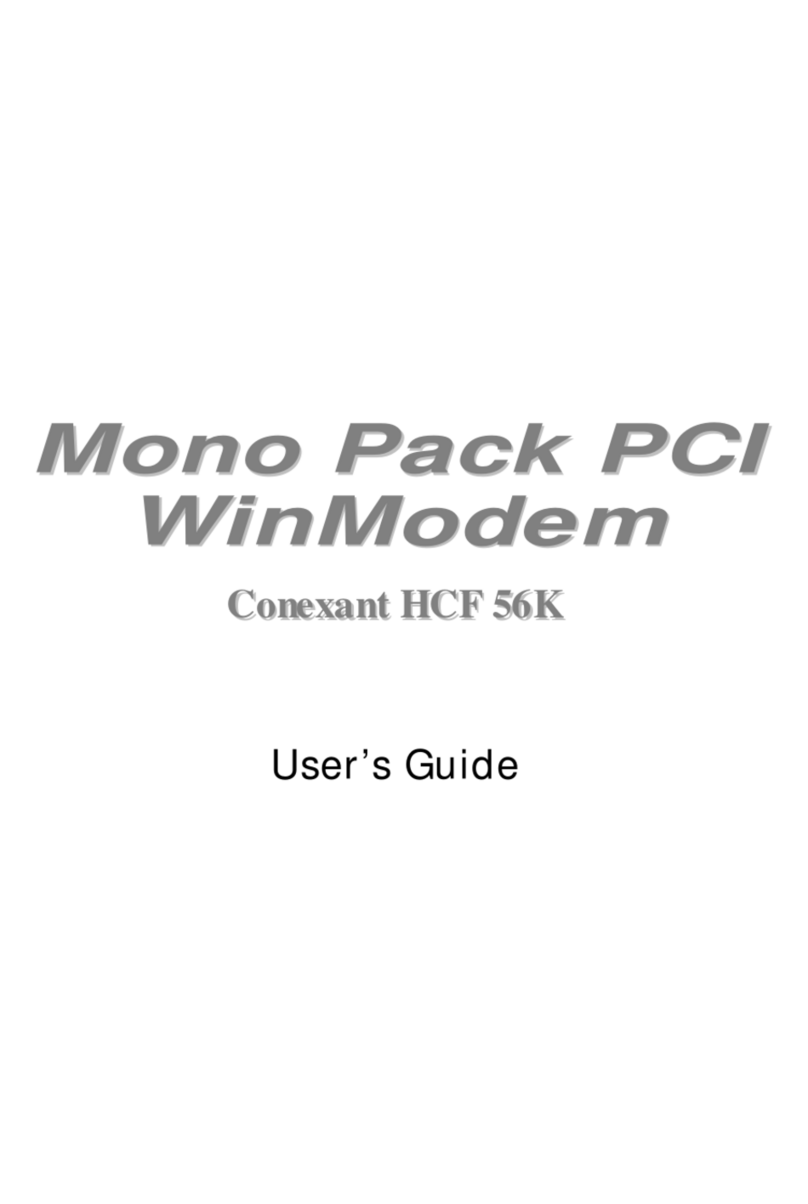
,QWHJUDWHG.IOH[999ELV0RGHP'HYLFH6HWV 5&'5&'DQG5&'
MD211 Conexant 7
In V.90/K56flex data modem mode (RC56), the MDP can
receive data from a digital source using a V.90- or
K56flex-compatible central site modem at line speeds up
to 56 kbps. Asymmetrical data transmission supports
sending data at speeds up to V.34 rates.
In V.34 data modem mode, the MDP can operate in 2-
wire, full-duplex, synchronous/asynchronous modes at
line rates up to 33.6 kbps. Using V.34 modulation to
optimize modem configuration for line conditions, the MDP
can connect at the highest data rate that the channel can
support from 33.6 kbps to 300 bps with automatic fallback.
Automode operation in V.34 is provided in accordance
with PN3320 and in V.32 bis in accordance with PN2330.
In fax modem mode, the MDP supports Group 3 facsimile
send and receive speeds of speeds of 33600, 31200,
28800, 26400, 24000, 21600, 19200, 16800, 14400,
12000, 9600, 7200, 4800, and 2400 bps.
ADPCM voice processing is supported.
Downloading of MDP code from the MCU is supported.
Microcontroller (MCU)
The MCU is a Conexant 8-bit microcomputer with pins to
support host/ DTE, MDP, voice/audio/speakerphone, and
optional RCDSVD SCP interface operation. The operating
voltage is +5V. The MCU provides a +3.3V output to
power the MDP.
The MCU connects to the host via a V.24 (EIA/TIA-232-E)
serial interface or a parallel microcomputer bus depending
on installed MCU firmware.
The MCU performs the command processing and host
interface functions. The crystal frequency is 28.224 MHz.
The MCU outputs a 28.224 MHz clock to the MDP
eliminating need for a separate MDP crystal circuit.
The MCU connects to the MDP via dedicated lines and
the external bus. The external bus also connects to OEM-
supplied RAM and ROM/flash ROM, and to the optional
RCDSVD SCP.
The MCU connects to an optional 256-byte serial
EEPROM over a dedicated serial interface.
The MCU is packaged in an 80-pin PQFP.
RCDSVD Speech Codec Processor (SCP) (Optional)
The RCDSVD SCP (R6715-14), required for on-board
DSVD operation, is packaged in a 100-pin PQFP. The
56.448 MHz crystal frequency is supplied by the MDP
XCLK output.
Plug and Play (PnP) ISA Bus Interface Device (PNP
Models)
The Conexant Plug and Play (PnP) ISA Bus Interface
Device (11596-21) is an 80-pin PQFP VLSI device that
supports automatic configuration of an Industry Standard
Architecture (ISA) modem card operating on a personal
computer (PC) with PnP capability. The PnP Device
supports host performance of the following functions when
interfacing with the PnP ISA card:
•Isolate the ISA card
•Read the card's resource data
•Identify the card and configure its resources
The PnP Device meets the requirements stated in the
Plug and Play ISA Specification Version 1.0a.
See Plug and Play (PnP) ISA Bus Interface Device Data
Sheet (Order No. MD144) for additional information.
MCU Firmware
MCU firmware performs processing of general modem
control, command sets, data modem, error correction and
data compression (ECC), fax class 1, fax class 2, DSVD,
AudioSpan, voice/audio/TAM/speakerphone, W-class,
V.80, and serial DTE/parallel host interface functions
according to modem models (Table 1).
Configurations of the modem firmware are provided to
support parallel host bus or serial DTE interface
operation.
The modem firmware is provided in object code form for
the OEM to program into external ROM/flash ROM. The
modem firmware may also be provided in source code
form under a source code addendum license agreement.
Supported Interfaces
The major hardware signal interfaces of the modem
device set are identified in Figure 1 (serial DTE interface)
and Figure 2 (parallel host bus interface).
Serial DTE Interface and Indicator Outputs
A V.24/EIA/TIA-232-E logic-compatible serial DTE
interface is selected by the Parallel/Serial Interface
(PARIF) input low. One serial transmit data input line
(~TXD), one serial receive data output line (~RXD), three
synchronous clocks (~XTCLK, ~RXCLK, and ~TXCLK),
four control input lines (~DTR, ~RTS, ~RDL, and ~AL),
and six status output lines (~CTS, ~DSR, ~RLSD, ~TM,
~RI, and ~DRSOUT) are supported.
Three dedicated indicator output lines (~DTRIND,
~TMIND, and ~AAIND) are also provided.
Parallel Host Bus Interface
A 16550A UART-compatible parallel host bus interface is
selected by Parallel/Serial Interface (PARIF) input high.
The interface signals are: eight bidirectional data lines
(HD0-HD7), three address input lines (HA0-HA2), three
control input lines (~HCS, ~HRD, and ~HWT), one status
output line (HINT), and a reset input line (-RESET).
NVRAM (Serial EEPROM) Interface
A 2-line serial interface to non-volatile RAM (NVRAM, i.e.
serial EEPROM) is supported. The interface signals are a
bidirectional data line (NVMDATA) and a clock output line
(NVMCLK). Data stored in NVRAM can take precedence
over the factory default settings. A 256-byte NVRAM can
store up to two user-selectable configurations and up to
four 32-digit dial strings.
External Bus Interface
The non-multiplexed external bus supports eight
bidirectional data lines (D0-D7) and 18 address output
lines (A0-A17). Read enable output (~READ), write
enable output (~WRITE), and four chip select output
(~ROMSEL, ~RAMSEL, ~DPSEL, and ~SCPSEL) lines
are also supported.
